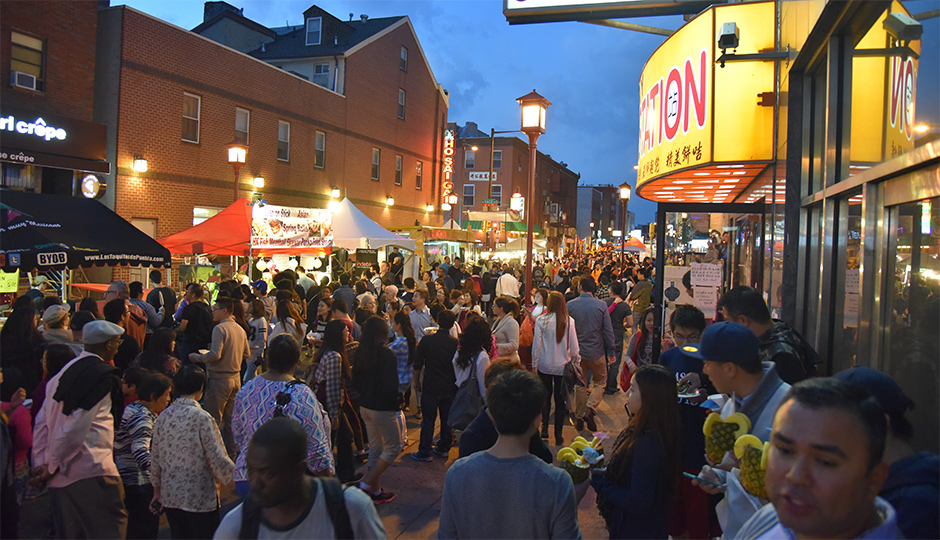Knight Cities Finalists Break Bread in Public Places

“Night markets” in neighborhoods across the city have become popular tools for unifying and showcasing communities. One might say that this year’s Knight Cities Challenge might produce a number of “Knight markets” that will have community bridge-building as a more explicit goal.
It’s been demonstrated in many ways that Philadelphians love good food. They also cherish the public spaces that allow them to relax and gather with their fellow residents.
The great majority of this year’s 20 local finalists in the annual Knight Cities Challenge have as an element food as a cultural connector, open space as the cement of a community, or some combination of both. There is one finalist, though, that takes an unsparing look at a different form of community-building, or in this case, destroying: the practice of redlining and how it both cut out communities’ hearts and isolated them from the city as a whole.
As for food and open space, here are a few of the proposals that rely on either or both:
- “Turning Corners,” a proposal by the Food Trust to turn vacant lots and local bodegas into spaces for healthy living.
- “The Links at Bartram’s Garden,” a proposal for a nine-hole miniature golf course at America’s first botanical garden that will highlight the city’s history.
- Interface Studio’s “Chinatown Street Market,” which seeks to use a street vendor marketplace as a cultural bridge between Chinatown and Callowhill.
- A proposal from Associación Puertorriqueños en Marcha to develop a sharable template for pop-up marketplaces as a catalyst for reviving blighted neighborhood business districts.
- A proposed marketplace in South Philly’s Mifflin Square Park that showcases immigrant cuisines.
- A proposal for a community-owned, cooperatively run coffeehouse in Germantown and another from Amalgam Comics and Coffeehouse, an African-American-owned comic emporium and community hangout in Fishtown, to create a space where aspiring comic artists of all stripes can develop their talents and showcase their work.
“I picked up on that theme as well,” said Patrick Morgan, Philadelphia program director at the Knight Foundation. “Some of it is that they’re playing to Philadelphia’s strengths, whether it’s food or great public spaces. They’re also playing to Philadelphia’s authenticity. This is how people traditionally come together. They’re pushing the boundaries and using space in new and different ways.”
One finalist, however, looks at how policies caused people to “use space in new and different ways” that did not promote stronger, more vibrant and more cohesive communities: Little Giant Creative’s “Philadelphia Before, During and After Redlining.” This proposed exhibition featuring an interactive data map will show how, by denying certain residents access to resources and services, the practice of redlining – in which race was a primary criterion for the denial of home loans and other financial assistance – exacerbated inequality and sent entire communities on a downward spiral from which most have yet to recover.
One of the other things Morgan liked about all the finalists’ proposals was their grit and innovative spirit. “We’re a hub of innovation,” he said. “There’s a lot of creativity here, a lot of grit, and there’s a lot of complexity in these ideas too.”
“We’re looking to learn what works” when it comes to making cities and city neighborhoods more vibrant, Morgan said, “and through the Knight Cities Challenge, Philadelphia is informing the national conversation about what works.”
The finalists should have submitted their detailed proposals by now. A group of readers will meet later this month to review them and select winners in early March, with winners notified in late March or early April.
Follow Sandy Smith on Twitter.


